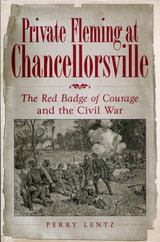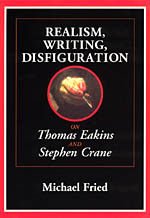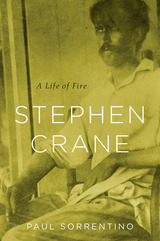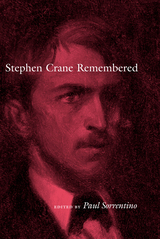
Within the ephemera of the everyday--old photographs, circus posters, iron toys--lies a challenge to America's dominant cultural memory. What this memory has left behind, Bill Brown recovers in the "material unconscious" of Stephen Crane's work, the textual residues of daily sensations that add up to a new history of the American 1890s. As revealed in Crane's disavowing appropriation of an emerging mass culture--from football games and freak shows to roller coasters and early cinema--the decade reappears as an underexposed moment in the genealogy of modernism and modernity.
Brown's story begins on the Jersey Shore, in Asbury Park, where Crane became a writer in the shadow of his father, a grimly serious Methodist minister who vilified the popular amusements his son adored. The coastal resorts became the stage for debates about technology, about the body's visibility, about a black service class and the new mass access to leisure. From this snapshot of a recreational scene that would continue to inspire Crane's sensational modernism, Brown takes us to New York's Bowery. There, in the visual culture established by dime museums, minstrel shows, and the Kodak craze, he exhibits Crane dramatically obscuring the typology of race.
Along the way, Brown demonstrates how attitudes toward play transformed the image of war, the idea of childhood and nationhood, and the concept of culture itself. And by developing a new conceptual apparatus (with such notions as "recreational time," "abstract leisure," and the "amusement/knowledge system"), he provides the groundwork for a new politics of pleasure. A crucial theorization of how cultural studies can and should proceed, The Material Unconscious insists that in the very conjuncture of canonical literature and mass culture, we can best understand how proliferating and competing economies of play disrupt the so-called "logic" and "work" of culture.

formally trained in the discipline of philosophical inquiry. Dooley shows how
Crane's philosophical pluralism, which represents his response to the acute moral
uncertainties resulting from the decline of late nineteenth-century religious
authority, allies him with the contextualism of such contemporary philosophers
as William James, C. S. Peirce, and Josiah Royce."
-- James B. Colvert, author of Stephen Crane


"An extraordinary achievement of scholarship and critical analysis. It is a book distinguished not only for its brilliance but for its courage, its grace and wit, its readiness to test its arguments in tough-minded ways, and its capacity to meet the challenge superbly. . . . This is a landmark in American cultural and intellectual studies."—Sacvan Bercovitch, Harvard University

With the exception of Poe, no American writer has proven as challenging to biographers as the author of The Red Badge of Courage. Stephen Crane’s short, compact life—“a life of fire,” he called it—continues to be surrounded by myths and half-truths, distortions and outright fabrications. Mindful of the pitfalls that have marred previous biographies, Paul Sorrentino has sifted through garbled chronologies and contradictory eyewitness accounts, scoured the archives, and followed in Crane’s footsteps. The result is the most complete and accurate account of the poet and novelist written to date.
Whether Crane was dressing as a hobo to document the life of the homeless in the Bowery, defending a prostitute against corrupt New York City law enforcement, or covering the historic charge up the San Juan hills as a correspondent during the Spanish-American War, his adventures were front-page news. From Sorrentino’s layered narrative of the various phases of Crane’s life a portrait slowly emerges. By turns taciturn and garrulous, confident and insecure, romantic and cynical, Crane was a man of irresolvable contradictions. He rebelled against tradition yet was proud of his family heritage; he lived a Bohemian existence yet was drawn to social status; he romanticized women yet obsessively sought out prostitutes; he spurned a God he saw as remote yet wished for His presence.
Incorporating decades of research by the foremost authority on Crane’s work, Stephen Crane: A Life of Fire sets a new benchmark for biographers.

A flamboyant personality and close friend of writers such as William Dean Howells, Henry James, and Joseph Conrad, Crane made telling impressions on his contemporaries. They often constitute the best assessments of Crane’s own personality and work. The 90 reminiscences gathered here offer a much-needed account of Crane’s life from a variety of viewpoints, as well as important information about the contributors themselves.
READERS
Browse our collection.
PUBLISHERS
See BiblioVault's publisher services.
STUDENT SERVICES
Files for college accessibility offices.
UChicago Accessibility Resources
home | accessibility | search | about | contact us
BiblioVault ® 2001 - 2024
The University of Chicago Press









